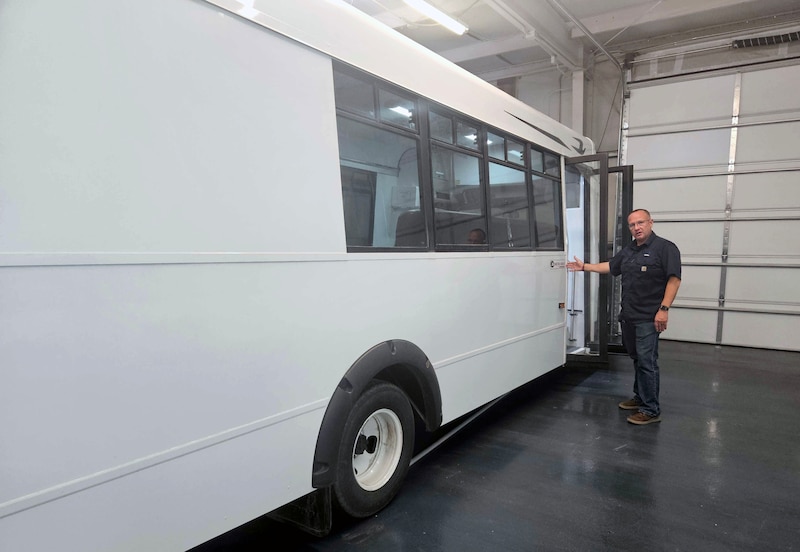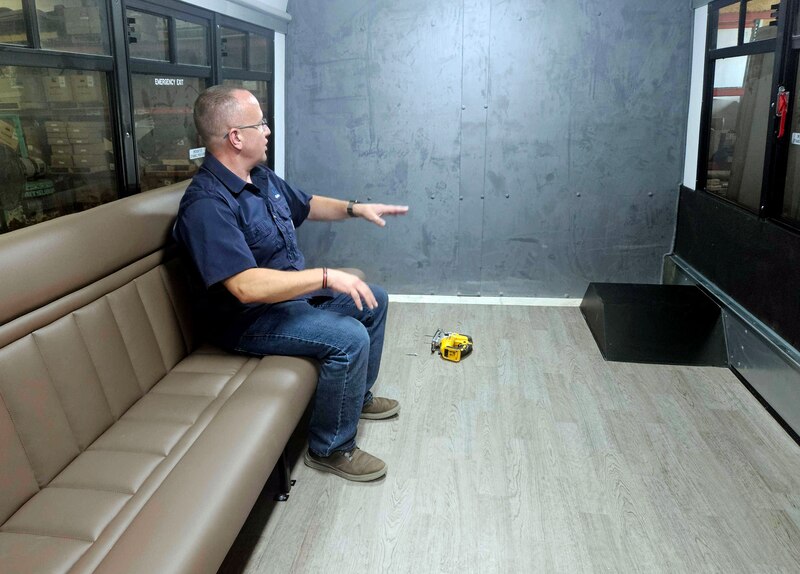Sign up for Chalkbeat Colorado’s free daily newsletter to get the latest reporting from us, plus curated news from other Colorado outlets, delivered to your inbox.
An influx of immigrant students last year left the Jeffco school district scrambling to meet their needs. So this fall, officials are piloting new programs and support to help newcomer students.
The school district is piloting a series of changes, including new staff, resources, and curriculum materials, as well as a new welcome center bus, after hundreds of immigrant students arrived throughout the past school year. The district is planning for the surge to continue into next school year.
“Our schools have been incredibly autonomous in how they meet the needs of our special populations and especially our multilingual language learners,” Jeffco Superintendent Tracy Dorland told the district’s school board this spring. “Our student achievement data tells us that’s not working.”
Schools across the state and country saw a surge of new students last school year arriving from South American countries, including Venezuela and Colombia. Jeffco reported to state officials that it received more than 300 students from October through the end of February. But district officials told the board in March that they estimated about 600 newcomer students had arrived in the previous 12 months.
Jeffco, the second largest school district in Colorado, enrolled 76,172 students as of last October, of which about 6.2% were identified as English learners.
New programs will focus on four schools at secondary level
Although the newcomer students are spread across the district, some Jeffco areas were more overwhelmed with new enrollments.
Four high schools — Jefferson Jr/Sr, Alameda Jr/Sr, Lakewood High, and Green Mountain High — will have specific newcomer programming where a dedicated teacher with a Culturally and Linguistically Diverse Education certificate to teach English learners will co-teach core academic classes and help give students two years worth of English credits in one year to help them gain traction toward graduation.
For elementary schools, the district is creating a team of roving teachers to deploy to any school experiencing a surge in students who don’t speak English as a native language. The central team will help screen, enroll, and orient students so English language development teachers at schools can continue their work helping classroom teachers learn strategies to teach any language learners in their classes.
Other large metro-area school districts, including Denver, Aurora, and Adams 12, already have specialized programs to serve refugee and immigrant students who are new to the country. But Jeffco hasn’t historically had such standalone programming.
The district is also retrofitting a short school bus to serve as a mobile welcome center for families. District leaders said they were inspired by the Aurora school district’s comprehensive welcome center that serves diverse immigrant and refugee families. Jeffco initially considered using an empty school building to create one, but worried that families spread throughout Jeffco would find transportation to the center to be a barrier.
“We really reimagined what a welcome center could look like,” said Tara Peña, Jeffco’s chief of family and community partnerships. “The brick and mortar experience of walking through and into an institution could also feel really intimidating and so having something that is colorful and inviting could hopefully take a little bit of that stigma away.”
Much of the cost of the bus is being covered by a state grant. The district has budgeted about $1.2 million for the new staff and other supports.

The bus and three newly hired family ambassadors, as well as additional translators when necessary, will travel to schools, apartment complexes, shelters, and libraries to find families that need help enrolling their children in school, or who need referrals to health or mental health resources. The bus will also be equipped with wi-fi to help families fill out online forms on site. District leaders are taking donations so the bus can be stocked with school supplies, clothes, food, and diapers to help families with other needs.
Peña said the family ambassadors come from some of the same countries as many new Jeffco students and speak their language.
“That immediately disarms our families,” she said.
Peña said the department is also in talks with high school students earning translation certificates at Alameda High School to possibly volunteer on the bus to get more translation work experience.
The students and the family ambassadors would speak Spanish. According to district data, 70% of the past year’s newcomers speak Spanish. The next most common languages are Arabic and Russian.

At the high school level, the district is planning to track students who enroll in the newcomer program to compare to other newcomer students who don’t to see if, in the long run, students are more successful with that support.
Students would be part of the newcomer programming for no more than a school year, and would be integrated into classes with non-newcomer students for electives, lunch, and other activities.
The district is expecting to serve a total of 150 students in the four schools and has already identified some students who will enroll, but is planning to leave space for students who show up this fall.
For students who aren’t near those four schools, the district will continue and expand an online service it offered last school year. Students who don’t have access to English language development in their own school log onto a multilingual learner online platform where they get live instruction from a trained teacher. The district expects to be able to serve 300 students this way.
The district is also in the process of updating district-wide policies for how high schools enroll students with foreign transcripts or without transcript records.
School board President Mary Parker questioned the process after a 16-year-old newly arrived Ugandan student she was mentoring was counseled to go to college because school officials felt the girl had already met the high school graduation requirements. District leaders said high schools have so far often used their own discretion in making decisions about enrolling and placing students, but will have updated uniform guidance soon.
In elementary schools, district leaders will be tracking whether the central roving team is the right support for school staff to prevent them from feeling overwhelmed.
“Right now the thinking initially is this is really a pilot design before we scale this up,” Peña said.
Yesenia Robles is a reporter for Chalkbeat Colorado covering K-12 school districts and multilingual education. Contact Yesenia at yrobles@chalkbeat.org.






